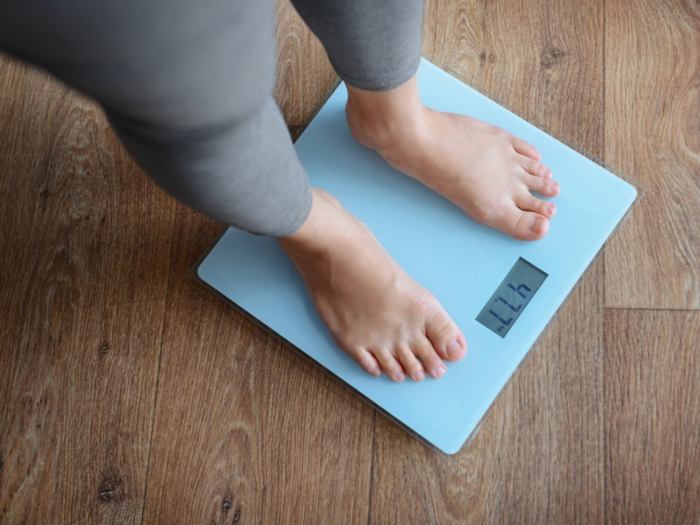- Home
- slideshows
- miscellaneous
- 15 fitness 'tips' that are doing more harm than good
15 fitness 'tips' that are doing more harm than good
Myth: Exercise doesn't help counter the negative effects of aging.

Myth: A sluggish metabolism is the main reason you gain weight as you age.

Truth: As far as calorie-burning capacity goes, our metabolisms barely budge after age 30, according to the National Institutes of Health. That means this frequently vilified component of our bodies is not the real culprit when it comes to the pounds that seem to creep on with each passing decade. Instead, age-related weight gain has far more to do with activity patterns, which slowly grind down over time. The best way to avoid age-related weight gain is simply moving around more.
Myth: To stay in shape, you only need to work out once or twice a week.

Truth: Once or twice a week won't cut it for sustained health benefits.
For your workouts to produce real results, you should be exercising 3-5 times a week, Chris Jordan, the exercise physiologist who came up with the 7-minute workout, told Business Insider.
His insight is bolstered by a new study published in January in the American Heart Association's journal Circulation that found that the best results for heart health were gleaned when participants worked out 4-5 times a week.
Myth: The best time to work out is first thing in the morning.

Truth: The best time for a workout is whatever time allows you to exercise most consistently. Ideally, you want to make physical fitness a daily habit, so if late-night trips to the gym are your thing, stick with it. If you prefer a morning run, do that instead.
Don't have a preference? Some research suggests that working out first thing in the morning might help speed weight loss by priming the body to burn more fat throughout the day.
Myth: Weight lifting turns fat into muscle.

Truth: You can't turn fat into muscle. Physiologically speaking, they're two different tissues. Adipose (fatty) tissue is found under the skin, sandwiched between muscles, and around internal organs like the heart. Muscle tissue — which can be further broken down into three main types — is found throughout the body.
Weight training helps build up the muscle tissue in and around any fat tissue. The best way to reduce fat tissue is to eat a healthy diet that incorporates vegetables, whole grains, lean proteins and healthy fats like those found in olive oil and fish.
Myth: Puzzles and games are great workouts for your brain.

Truth: Plain old physical exercise seems to be better for brain health than any type of mental puzzle available, according to a wealth of research. A spate of recent studies suggests that aerobic exercise — any kind of activity that raises your heart rate and gets you moving and sweating for a sustained period of time — has a significant, overwhelmingly beneficial impact on the brain.
When it comes to boosting your mood, improving your memory, and protecting your brain against age-related cognitive decline, exercise may be as close to a wonder drug as we'll get.
"Aerobic exercise is the key for your head, just as it is for your heart," wrote the authors of a recent Harvard Medical School blog post.
Myth: Exercise is the best way to lose weight.

Truth: If you're looking to lose weight, don't assume that you can simply "work off" whatever you eat. Experts say slimming down almost always starts with significant changes to your eating habits.
"In terms of weight loss, diet plays a much bigger role than exercise," University of Texas exercise scientist Philip Stanforth told Business Insider.
That said, being active regularly is an important part of any healthy lifestyle.
Myth: Sit-ups are the quickest ticket to a 6-pack.

Truth: As opposed to sit-ups, which target only your abdominal muscles, planks recruit several groups of muscles along your sides, front, and back. If you want a strong core — especially the kind that would give you 6-pack-like definition — you need to challenge all of these muscles.
"Sit-ups or crunches strengthen just a few muscle groups," write the authors of the Harvard Healthbeat newsletter. "Through dynamic patterns of movement, a good core workout helps strengthen the entire set of core muscles you use every day."
Myth: Weight training is for men.

Truth: Weight training is a great way to strengthen muscles, and has nothing to do with gender.
That said, women produce less testosterone on average than men do, and studies suggest that hormone plays a role in determining how we build muscle.
Myth: It takes at least a couple weeks to get 'out of shape.'

Truth: In most people, muscle tissue can start to break down within a week without regular exercise.
"If you stop training, you actually do get noticeable de-conditioning, or the beginnings of de-conditioning, with as little as seven days of complete rest," Shawn Arent, director of the Center for Health and Human Performance at Rutgers University, said. "It very much is an issue of use it or lose it."
Myth: Running a marathon is the ideal way to get fit.

Truth: You can get many of the benefits of long-distance running without ever passing the five-mile mark.
Not ready to conquer a marathon? No problem. Running fast and hard for just 5-10 minutes a day can provide some of the same health outcomes as running for hours. In fact, people who run for less than an hour per week — as long as they get in those few minutes each day — see similar benefits in terms of heart health compared to those who run more than 3 hours per week.
Plus, years of recent research suggest that short bursts of intense exercise can provide some of the same health benefits as long, endurance-style workouts — and they also tend to be more fun.
Myth: Keeping a food diary is a reliable way of monitoring and controlling what you eat.

Truth: Even when we're making an effort to be conscious about what we're putting into our bodies and how active we're being, we often give ourselves more credit than we deserve.
"People tend to overestimate their physical activity and underestimate how much food they eat," Stanforth said. "They consistently think they've worked out more and consistently think they've eaten less."
Myth: Sports drinks are the best way to re-hydrate after a workout.

Truth: Most sports drinks are just sugar and water.
Instead, experts recommend refueling with plain old water and a high-protein snack, since studies suggest protein helps recondition muscles after a workout. (Because the contents of supplements like protein powders can be largely unregulated, however, your best bet is to eat real protein-packed food.)
Myth: Your BMI is an accurate way to size-up your overall health.

Truth: BMI is an outdated metric for assessing overall health, and measuring your waistline is more accurate.
That's because the amount of fat we hold around our waistlines indicates whether we're over- or under-weight and is also strongly linked to the health of our hearts, our risk for diseases like diabetes, and potentially even our cognitive performance as we age.
Myth: You need to sweat for your exercise to count.

Truth: Exercise could be the closest thing to a miracle drug that we have, but hard-core workouts like kickboxing aren't the only forms of it that count.
Any effort that gets you moving and breathing — whether it's a twice-weekly heart-pounding kickboxing class or a 30-minute walk to work — has measurable benefits for your brain and body, according to recent research published this spring in the Journal of the American Heart Association.
For the latest study, researchers looked at data on physical activity and death rates from national surveys of more than 4,800 adults and found that people who clocked roughly 30 minutes a day of exercise were significantly less likely to die from any cause than people who got none. The type of exercise mattered less than the simple fact that they were regularly moving.
"The key message based on the results presented is that total physical activity (i.e., of any bout duration) provides important health benefits," the authors said.
Popular Right Now
Popular Keywords
Advertisement